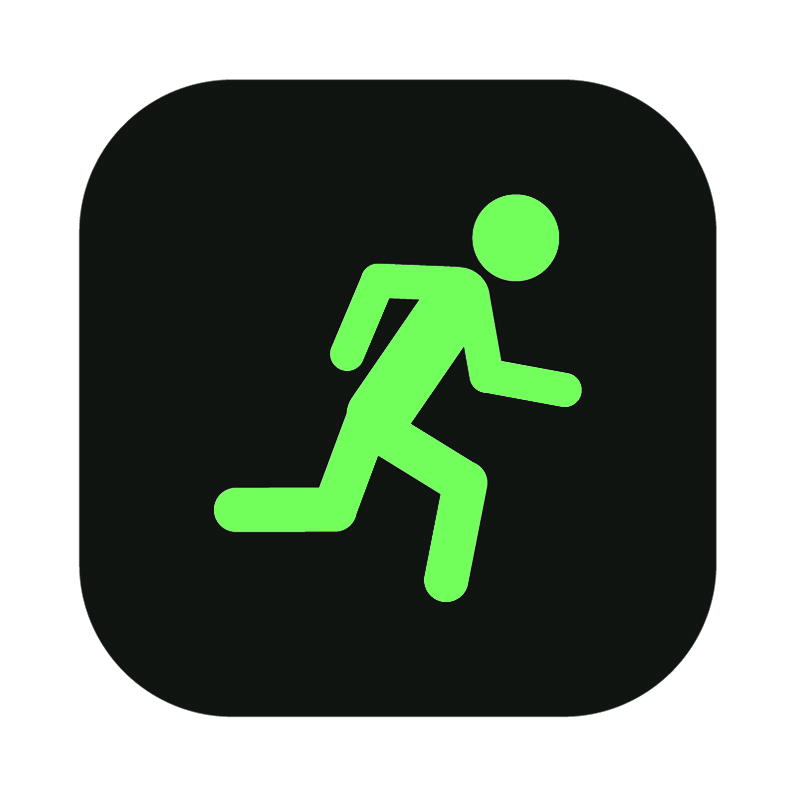Run Efficiency Part 1: Cadence

 Does anyone else hear that word in a French accent?
Does anyone else hear that word in a French accent?
If you’re a self-proclaimed nerd like me, you will get excited by the fact that this Middle English word was first used used to describe a “rhythm or metrical beat“. To add more depth to our modern day use of the word in running and cycling, it was founded in Old Italian and followed by the French meaning: “flow of rhythm in prose or verse“. And if that doesn’t float your Bookworm boat, the Latin version ‘Cadere’ – which pre-dates all versions – comes from the verb ‘to fall‘. The relevance of my personal joy at this connection may not have leapt (sorry) out at you yet, but you’ll get there soon.
The rate at which our feet hit the ground while running is incredibly important for a few reasons. Once our cadence is programmed to within a certain range, the knock-on effects result in reduced susceptibility to injury, better posture and of course increased efficiency.
The longer our foot remains on the ground while in the ‘support phase’ of running, the more it will act like a brake to slow us down. If you have a slower cadence your support phase is playing a big part in affecting your efficiency and either slowing you down or demanding increased effort – or both – so unless you’ve mastered the art of levitation or human flight, speeding up your stroke rate will have a big impact on how you feel and how you move.
I like to use the image of a skateboarder: when they want to slow down or stop, they simply move their foot forward of the board itself and will likely plant the heel on the ground to act as a brake. Inversely, to gain momentum, the boarder will take shorter steps alongside the board in a ‘pulling back’ motion. I hope this instantly provides you with a picture in your mind’s eye, and may even sound familiar. Regardless of heel striking or not, if a runner lands in front of the body the effect is the same… increased effort required and a lack of speed and efficiency.
Returning then to stroke rate, the time it takes for a ‘fore of the body’ runner to land, support themselves on one foot, and transfer their weight over to the next foot will set up a spiral of actions that requires an awful lot of effort due to the braking action. I like to call this ‘The Tripod’… have you ever done the test to find out which way you’d ride a snowboard? You stand still and someone lightly pushes you off balance from behind… whichever foot you instinctively put out to stop the fall will be your dominant foot and therefore ‘regular’ or ‘goofy’. It’s the same illustration to describe how a tall building works… you want something wide at the bottom to STOP IT FALLING OVER.
The fact of the matter, is that we want to ENCOURAGE falling (see above ‘Cadere’ – to fall… what fun!) and act more like a wheel than a tripod. Last metaphor coming up (“yeah right Weekesy fat chance!”) picture a wheel sitting on the road… it touches the ground in a very small point of contact… and where? right at the bottom… always, always, always at the bottom. It’s impossible for it to hit the ground any other way whether it is moving or stationary. Which means we are aiming at the foot landing UNDERNEATH the body every time we hit the ground while running and using gravity for free speed.
We can actually twist the thinking in a linear way if we accept that a ‘fore-body’ runner has a slow cadence, speeding up the cadence will likely reverse the effects. It’s true… if we aim for a cadence of around 180 foot falls per minute (that’s 90 right and 90 left) there simply is not enough time to throw that foot forward of the body, support the body and throw the body past it. A tripod will fail as soon as you speed it up… exactly what we want… falling.
Take a good look at any competent runner, elite level or otherwise… when it looks effortless, they are probably hovering around 88-92 strikes on one foot per minute. The HUGE distinction between non-efficient runners and these specimens is that they run at this “metrical beat” regardless of running fast or slow. In addition, they are landing under the body, using gravity to turn the wheel and not a single mention about heel striking or forefoot striking.
It matters not if you are heel striking as long as you land under the body. In fact you’ll find about half of all elite runners are heel strikers if you look very carefully, and a lot of triathletes once they get tired.
A few decades ago, a Russian sports scientist by the name of Dr. Nicholas Romanov coined the phrase ‘Pose Running’ while steering away from his own sport of high jump and analysing runners. Although he didn’t ‘invent’ the movement, Romanov spotted that there’s an unavoidable point in every persons’ run technique that is the same, and he set about creating a framework within which to teach the technique of run efficiency. Take a cross section of runners – no matter how small or large – and their techniques will look somewhat different, but what they all have in common is that at some point a foot must support the body.
Dr. Romanov breaks down the run process into just three parts: POSE – FALL – PULL, and he too points out the importance of gravity in human movement. His approach was to position the body in such a way that gravity would help and not hinder. In addition to assisting runners greatly in feeling more comfortable for longer periods and less fatigued, the instance of knee impact was dropped by around 50%.
On the subject of injury, just recently I heard about a few papers studying the use of shorter strides in running and how they can stave off injury. One of these was the Scandinavian Journal of Medicine & Science in Sports back in May 2018. The study found that shortening the stride while running had the effect of lessening greatly the force created form the foot hitting the ground. The bi-product of shortening the stride was that the leg was never fully extended, and therefore the bent knee offered a much less forceful landing.
Those runners landing fore of the body – purely by physics alone – will likely land on the heel, setting up the potential for musculoskeletal injury in the knee and hips. Inversely, those landing on the tippy-toes (please don’t!) will likely encounter soft tissue injuries below the knee.
So how do you know if your cadence needs speeding up?
My advice would be to get hold of a musicians’ metronome much like those seen below (“rhythm or metrical beat“!). You can find these for under $20 online, and most come with a little peg-like clip that you attach to your shorts or cap. Yes, you’ll feel like a wally beeping along the road, but it’s a great way to keep you honest. I even raced with one a couple of times, and remember running past one guy who exclaimed with a laugh: “Shit, he’s gonna blow!!”. If you get embarrassed easily, triathlon probably ain’t for you.

You can also use another device I’m a huge fan of, the Finis Tempo Trainer which is designed for use in the swimming pool, but not only has a ‘strokes per minute’ setting but also a handy clip as mentioned above. I prefer the musicians’ version only slightly more because of the ‘accent beat’ function. For example… when set to ‘fourth beat’ the metronome will make a different noise on the first beat followed by three of the same sound. The reason for this will become clear in the next part of this series on Run Efficiency: Breathing.
In this Smart Phone Age, you can also get an app for your mobile phone that does the exact same thing, assuming you don’t mind lugging the device with you on your runs… something I couldn’t stand but each to their own. I have a free app that I use via a speaker in my workshops and it’s just called “Simple Metronome”. It’s a great app because it has a “Tap Tempo” button… which allows an observer to synchronize the rhythm of the feet hitting the ground with the tap of a finger, and after thirty seconds or so, they will have a pretty good idea as to what your natural cadence is.
There’s only one correct way to change your run technique: SLOWLY!
And by slowly, I mean over a matter of months, not days. Changing anything that has the ability to use different muscles, including the back and soft tissues should be taken very seriously.
That said, the benefits can be huge. So… if you have a buddy you can use a simple app like the one mentioned above to find your natural cadence. Failing that, use the musicians’ version and just play with the beep until it matches the rhythm of your feet.
Over the next few months, add some “metronome practice” to just one run per week, ideally a recovery or easy run to ensure you can focus on the task at hand. Just spend a few minutes at a time with a cadence one or two BPM maximum more than your found natural stroke rate. Do a few intervals like that, running naturally in between. As the weeks go by, spend longer testing the new cadence on that one run per week, then increase that to two runs then all of your runs using the approach that you ONLY change one third of the week, and one third of each workout at a time. Over time, when the two extra BPM feels normal, then add a couple more and start the process again… being very patient.
I cannot stress enough that you must foam roll your calves and Achilles after every run – whether you tried the new cadence or not. These two muscles can get incredibly tight when they are not used to this style of running. And ladies… if you wear high heels a lot of the time, spend your time at home in bare feet and use the foam roller like your life depends on it!
I’ll leave you with one more metaphor (“I bloody knew it!”)… think about pistons not pendulums. I want runners to focus on taking their feet sharply off the ground instead of stomping them down so the beep of the metronome should mean ‘pull’ not plant. Picture a white hot plate beneath you that you simply can’t be standing on for very long… or that skateboarder we talked about.
Next time: Run Efficiency Part 2 – Breathing.
W

1 Response